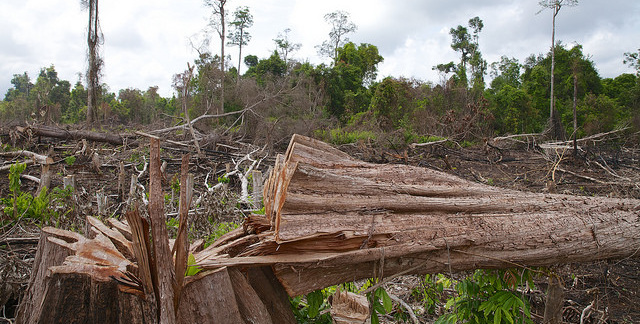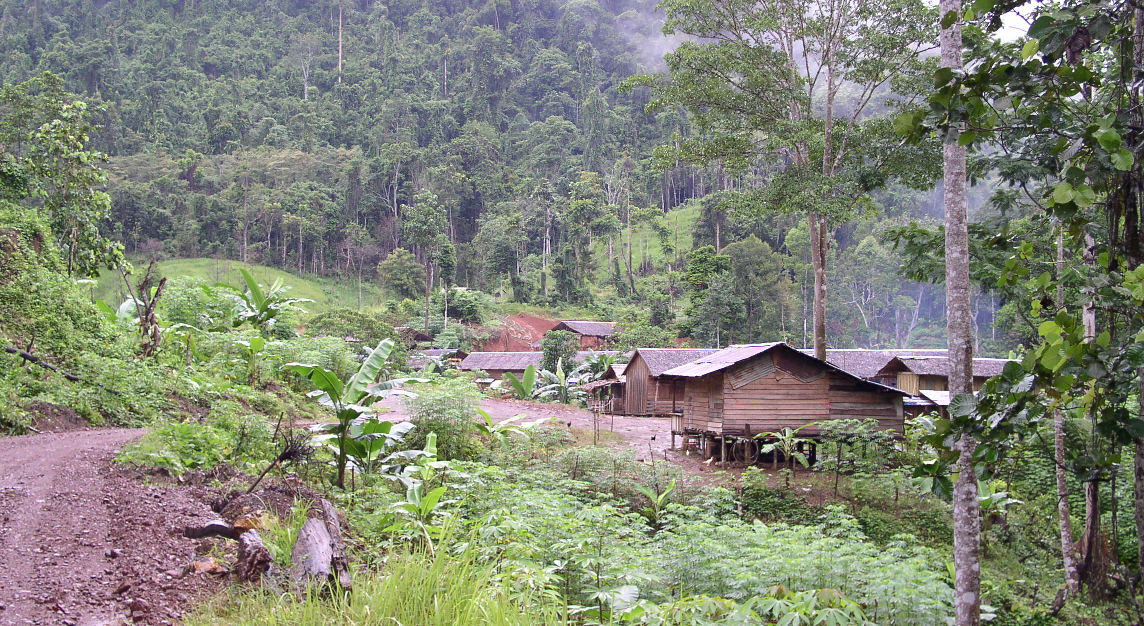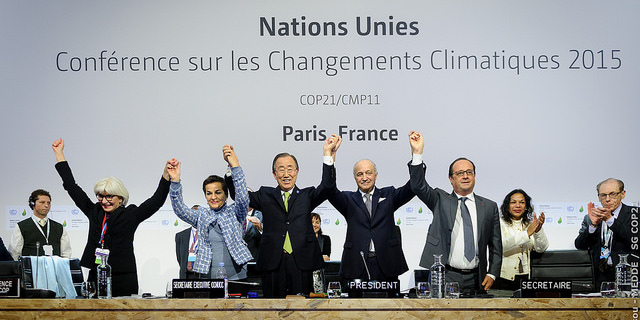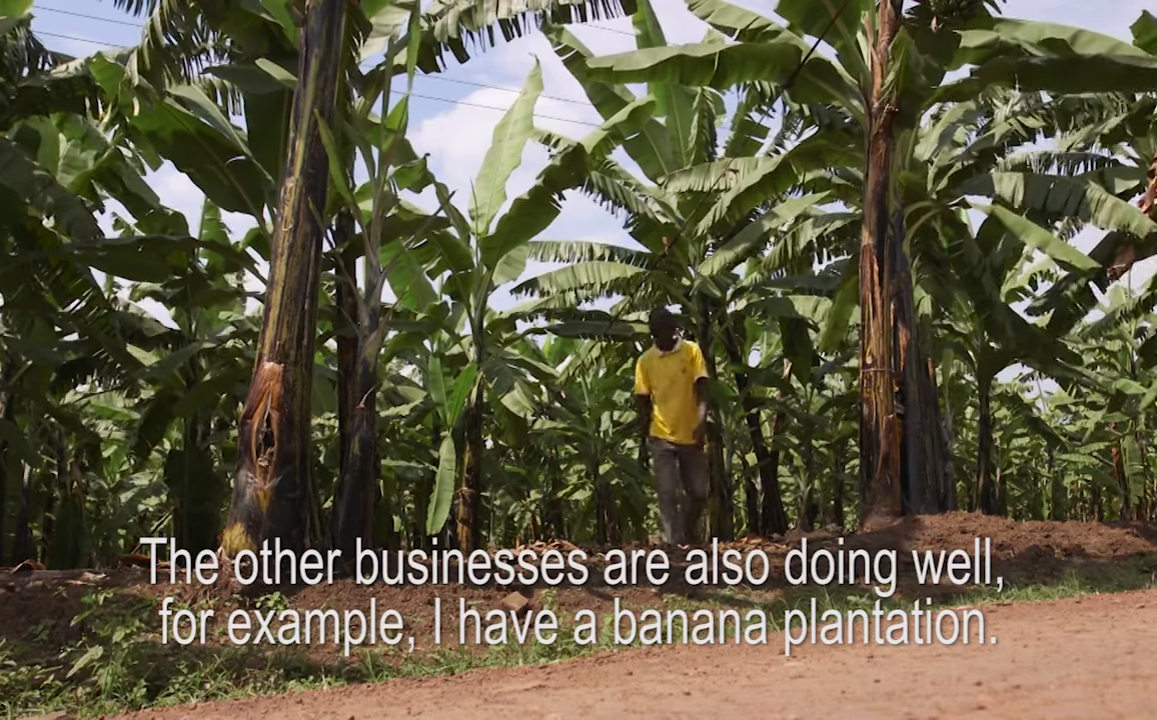Select indicator
 Renewable energy
Renewable energy
To bypass the use of fossil fuels, to fight poverty and to help reduce indoor air pollution, the Netherlands supports low-income countries in developing their renewable energy potential.
Access to renewable energy
What does this indicator mean?
The transition from fossil fuels to renewable energy plays a central role in addressing climate change.
The main growth in energy use and related greenhouse gas emissions is projected to take place in developing countries. More than a billion people living in developing countries have no access to electricity. Almost 3.5 billion people rely on traditional cooking methods with dangerous solid biomass, mostly firewood, causing indoor air pollution and impacting public health.
The Netherlands has made energy access for the poor a priority. Its target is to provide access to renewable energy to 50 million people by 2030.
Progress is monitored by tracking the cumulative number of people that have received access to renewable energy since 2015.
What does the result mean?
In 2016, the Netherlands provided access to renewable energy to 2.2 million people, bringing the total since 2015 to 4.1 million people.
In 2016, the Netherlands invested in Energising Development and the Africa biogas programme to provide direct access to decentralised renewable energy systems at household and village level. Through the Access to Energy Fund of the Netherlands’ Development Bank (FMO), the Netherlands invested in private-sector renewable energy projects.
Furthermore, the Netherlands supported World Bank Group programmes, such as Lighting Africa, Scaling Solar and ESMAP, which support developing countries' governments in their energy access policies and programmes.
 Renewable energy
Renewable energy
To bypass the use of fossil fuels, to fight poverty and to help reduce indoor air pollution, the Netherlands supports low-income countries in developing their renewable energy potential.
Greenhouse gas emissions reduced or avoided annually

Scaling Up Renewable Energy Access in Indonesia (Asian Development Bank).
What does this indicator mean?
Through multilateral climate funds, the Netherlands supports climate action in developing countries, including renewable energy programmes. The actual results of these programmes will be realised years after funding approval. This indicator tracks the anticipated reduction in annual CO2 emissions by 2030, resulting from an increase in the use of renewable energy as a consequence of funding approvals by the multilateral climate funds, such as the Green Climate Fund and the Scaling up Renewable Energy Program (SREP). The results of this indicator can be aggregated with the results of the indicator 'greenhouse gas emissions reduced or avoided annually', part of the deforestation programmes under the sub-theme Deforestation.
What does the result mean?
In 2016, the SREP approved one country investment plan in Cambodia. This plan will avoid 97,000 tonnes of CO2 emissions per year, of which 10,185 tons of CO2 can be attributed to the Netherlands, based on its share in the fund's resources. Due to a lack of resources in SREP, further investment plans were delayed. The Green Climate Fund had its first full year of operation in 2016, during which it approved nine renewable energy projects that are expected to jointly avoid about 5 million tons of CO2 emissions per year, of which 64,794 tons can be attributed to the Netherlands, based on its share in the fund's resources.
 Halt deforestation
Halt deforestation
Forests absorb one-third of man-made greenhouse gas emissions. Simultaneously, deforestation is a major driver of these emissions, especially in developing countries. The Netherlands aims to halt deforestation by promoting deforestation-free trade, strengthening forest governance and protecting forest landscapes.
International co-operation to halt deforestation

An area of land that has been burned and cut (photo taken by Nanang Sujana, Center for International Forestry Research (CIFOR)).
What does this indicator mean?
The Netherlands contributes to halting deforestation through three different lines of complementary activities: promoting deforestation-free trade, strengthening forest governance and protecting forest landscapes.
The Netherlands encourages deforestation-free trade through the promotion and expansion of the Amsterdam Declarations 'Towards Eliminating Deforestation from Agricultural Commodity Chains with European Countries' and by supporting the EU's Forest Law Enforcement, Governance and Trade (FLEGT) programme.
Forest governance is strengthened through support to the Amazon Co-operation Treaty Organisation (ACTO) and Tropenbos.
To protect forest landscapes, the Netherlands intends to contribute to the multi-donor partnership Programme on Forests PROFOR, the World Resources Institute (WRI) and the Readiness Fund of the Forest Carbon Partnership Facility (FCPF).
What does the result mean?
In 2016, Norway and France signed the Amsterdam Declarations, initiated by the Netherlands in 2015 to jointly eliminate deforestation from large agricultural supply chains. Indonesia adopted and implemented new legislation to halt illegal logging through the EU-FLEGT programme, which was successfully concluded with the first shipment of FLEGT-licensed timber in the EU. The Netherlands financially supports this programme.
Other organisations supported by the Netherlands, such as the World Resources Institute and the Amazon Treaty Co-operation Organisation, have further improved deforestation data monitoring and information sharing, and focus on building and sharing knowledge between governments, forest institutes, landowners and farmers.
 Halt deforestation
Halt deforestation
Forests absorb one-third of man-made greenhouse gas emissions. Simultaneously, deforestation is a major driver of these emissions, especially in developing countries. The Netherlands aims to halt deforestation by promoting deforestation-free trade, strengthening forest governance and protecting forest landscapes.
Hectares of land and forest under improved sustainable management
What does this indicator mean?
To monitor the halting of deforestation, the Netherlands is tracking the number of hectares of land and forest under sustainable management. The number of hectares attributed to the Netherlands is based on its share in the funding of the activities.
What does the result mean?
In 2016, Dutch support resulted in 764,472 hectares of land and forest under sustainable management. This was achieved through the sustainable landscape programmes operated by the Sustainable Trade Initiative's (IDH) ISLA programme, the International Union for the Conservation of Nature (IUCN), the Horn of Africa Climate Change Programme and several programmes supported by the Dutch Embassy in Nairobi.
These landscape programmes strive for improved sustainable business practices and landscape governance with a strong focus on facilitating dialogues between the government, private sector and civil society. The IDH ISLA programme initiated these dialogues in five of its nine landscapes. Furthermore, IUCN created joint ventures on sustainable basin management between local and commercial farmers in Tanzania and Mozambique, incorporating forest restoration in watershed protection and small business development.
 Halt deforestation
Halt deforestation
Forests absorb one-third of man-made greenhouse gas emissions. Simultaneously, deforestation is a major driver of these emissions, especially in developing countries. The Netherlands aims to halt deforestation by promoting deforestation-free trade, strengthening forest governance and protecting forest landscapes.
Greenhouse gas emissions reduced or avoided annually

High Conservation Value Forest in Indonesia (photo taken by Tropenbos)
What does this indicator mean?
Through multilateral climate funds, the Netherlands supports climate action in developing countries, including forestry and land-use projects. The actual results of these projects will be realised many years after funding approval. This indicator tracks the anticipated annual CO2 emission reduction by 2030 in forestry and land-use projects, as a consequence of funding approvals by the Green Climate Fund. The results of this indicator can be aggregated with the results of the indicator 'greenhouse gas emissions reduced or avoided annually', part of the renewable energy programmes under the sub-theme Renewable Energy.
What does the result mean?
The Green Climate Fund had its first full year of operation in 2016, during which it approved four forestry and land-use projects that are expected to jointly avoid about 4 million tons of CO2 emissions per year, of which 56,071 tons can be attributed to the Netherlands, based on its share in the fund's resources.
 Climate-smart agriculture
Climate-smart agriculture
Through its Food and Nutrition Security programmes, the Netherlands focuses on improving agricultural productivity in the context of climate change, helping smallholder farmers to adapt to climate change and stimulating land use that is more resilient to climate shocks and stresses.
Smallholder farmers more resilient to climate shocks and stresses
What does this indicator mean?
To monitor progress, the Netherlands is tracking the number of smallholder farmers that have become more resilient to climate shocks and stresses. The results presented here are the same as under the Food and Nutrition Security indicator number of farmers that became more resilient to stresses and shocks.
What does the result mean?
Smallholder farmers in developing countries are highly vulnerable to the effects of climate change. Unpredictable weather conditions, drought, floods and storms greatly influence their yields, threatening their livelihoods and local consumers' access to food.
In 2016, the Netherlands increased the resilience of 1.32 million smallholder farmers to the effects of climate change. This was achieved through the Adaptation for Smallholders Programme of the International Fund for Agricultural Development (IFAD), as well as through Food and Nutrition Security programmes in partner countries, such as Burundi, Kenya, Uganda, Bangladesh and Ghana. Resilience was increased through a variety of measures, including water-harvesting, adoption of improved agricultural techniques, insurance arrangements, producer support mechanisms and improved weather information.
 Climate-smart agriculture
Climate-smart agriculture
Through its Food and Nutrition Security programmes, the Netherlands focuses on improving agricultural productivity in the context of climate change, helping smallholder farmers to adapt to climate change and stimulating land use that is more resilient to climate shocks and stresses.
Hectares of farmland more resilient to climate shocks and stresses
What does this indicator mean?
To monitor progress, the Netherlands is tracking the number of hectares of farmland that became more resilient to climate shocks and stresses. The results presented here are the same as under the Food and Nutrition Security indicator number of hectares of farmland that became more resilient to stresses and shocks.
What does the result mean?
Climate change is exacerbating natural resource challenges, such as poor soil fertility, desertification, soil erosion and water availability. Smallholder farmers are supported in adapting to changing conditions and in adopting new practices that protect the farmland on which their livelihoods depend.
Food and nutrition security activities in partner countries such as Uganda, Ghana and the Palestinian Territories, as well as the IFAD’s Adaptation for Smallholders Programme, have increased the resilience of more than 178,000 hectares of farmland. An example is the Inclusive Dairy Enterprise project in Uganda, which trains farmers in efficient pasture land management and supports water conservation investments at farm level.
 Water and climate resilience
Water and climate resilience
Through its Water programmes, the Netherlands assists developing countries in dealing with the significant impact of climate change on water availability and the increased threat of flooding.
People with access to climate-resilient clean drinking water sources
What does this indicator mean?
To monitor progress, the Netherlands is tracking the number of people that were provided with access to clean drinking water sources, whereby the risks of climate change were taken into account and addressed. The results presented here are a sub-set of the results under the Water indicator sustainable access to and use of improved water sources.
What does the result mean?
The Water, Sanitation and Hygiene (WASH) programmes supported by the Netherlands focus on providing access to safe drinking water and improved sanitation.
Climate change can affect the long-term availability of clean water, due to changing weather patterns and salination of ground water. This is recognised in the new WASH strategy 2016-2030, which explicitly aims to address the risks posed by climate change.
In 2016, 1.33 million people were provided with access to clean drinking water sources, whereby the risks of climate change were taken into account and addressed. The most important programmes that contributed to these results were the Water Financing Partnership Facility of the Asian Development Bank, the UNICEF programme Accelerating Sanitation and Water for All and the Water programmes of the Netherlands' embassies in Kenya, South Sudan and Bangladesh.
 Water and climate resilience
Water and climate resilience
Through its Water programmes, the Netherlands assists developing countries in dealing with the significant impact of climate change on water availability and the increased threat of flooding.
People with access to climate-resilient improved sanitation
What does this indicator mean?
To monitor progress in water and climate resilience the Netherlands is tracking the number of people that were provided with access to improved sanitation, whereby the risks of climate change were taken into account and addressed. The results presented here are a subset of the results under the Water indicator sustainable access to and use of improved sanitation.
What does the result mean?
The Water, Sanitation and Hygiene (WASH) programmes supported by the Netherlands focus on providing access to safe drinking water and improved sanitation.
Extreme weather events can undermine the accessibility and functioning of sanitation infrastructure. This is recognised in the new WASH strategy 2016-2030, which explicitly aims to address the risks posed by climate change.
In 2016, the Netherlands provided 1.37 million people with access to improved sanitation, whereby the risks of climate change were taken into account and addressed. The most important programmes that contributed to these results were the Water Financing Partnership Facility of the Asian Development Bank, the UNICEF programme Accelerating Sanitation and Water for All, the Water Supply and Sanitation Collaborative Council and the Water programmes of the Netherlands' embassies in Kenya and Bangladesh.
 Water and climate resilience
Water and climate resilience
Through its Water programmes, the Netherlands assists developing countries in dealing with the significant impact of climate change on water availability and the increased threat of flooding.
People more resilient to climate change due to improved water management
What does this indicator mean?
To monitor progress in water and climate resilience, the Netherlands is tracking the number of people that become more resilient to climate change as a result of benefiting from Integrated Water Resource Management programmes. The results presented here are the same as the results under the Water indicator beneficiaries of improved basin management and safe deltas. People that benefit from improved water management also become more resilient to the effects of climate change, because they become less vulnerable to droughts and floods.
What does the result mean?
Climate change increases the risk of flooding, due to rising sea levels, more intense storms and extreme rainfall. In other areas, climate change leads to droughts and reduced availability of water.
Through Integrated Water Resources Management programmes, the Netherlands increases people's resilience to climate change, by e.g. improving their protection against floods and providing more efficient irrigation and drainage.
In 2016, almost 10 million people became more resilient to climate change due to improved water management through the Asian Development Bank’s Water Financing Partnership Facility, the World Bank’s Water Partnership Programme and the Water programmes of the Netherlands' embassies in Bangladesh, Indonesia, Mali, Mozambique and Kenya.
 Climate diplomacy
Climate diplomacy
Implementation of the Paris Climate Agreement is crucial for developing countries and for sustainable development worldwide.
Through ‘climate diplomacy’, the Netherlands actively contributes to reaching the goals of the Paris Agreement, which focuses on reducing greenhouse gas emissions and strengthening resilience to climate change.
Climate change negotiations

Plenary session of COP21 after adoption of the Paris Agreement.
What does this indicator mean?
The adoption of the Paris Agreement in 2015 marked a historical moment when all countries came together and committed to limiting climate change and building resilience, especially in vulnerable countries.
The agreement needs to be translated into action over the coming years, which will require action by all countries, including their governments, businesses, non-governmental organisations and citizens. As part of the negotiations, clear rules for implementation and monitoring will need to be developed, as well as guidelines for national action that take into account the needs and capabilities of the most vulnerable countries and groups.
What does the result mean?
In 2016, negotiations continued on the guidelines and methodologies for transparency, ambition and reporting under the Paris Climate Agreement.
The Netherlands continued to support efforts to integrate gender within climate action, to enhance the transparency of climate finance, to develop a system to enhance ambition under the negotiations, to enhance the Global Climate Action Agenda and to strengthen the role of non-state actors.





